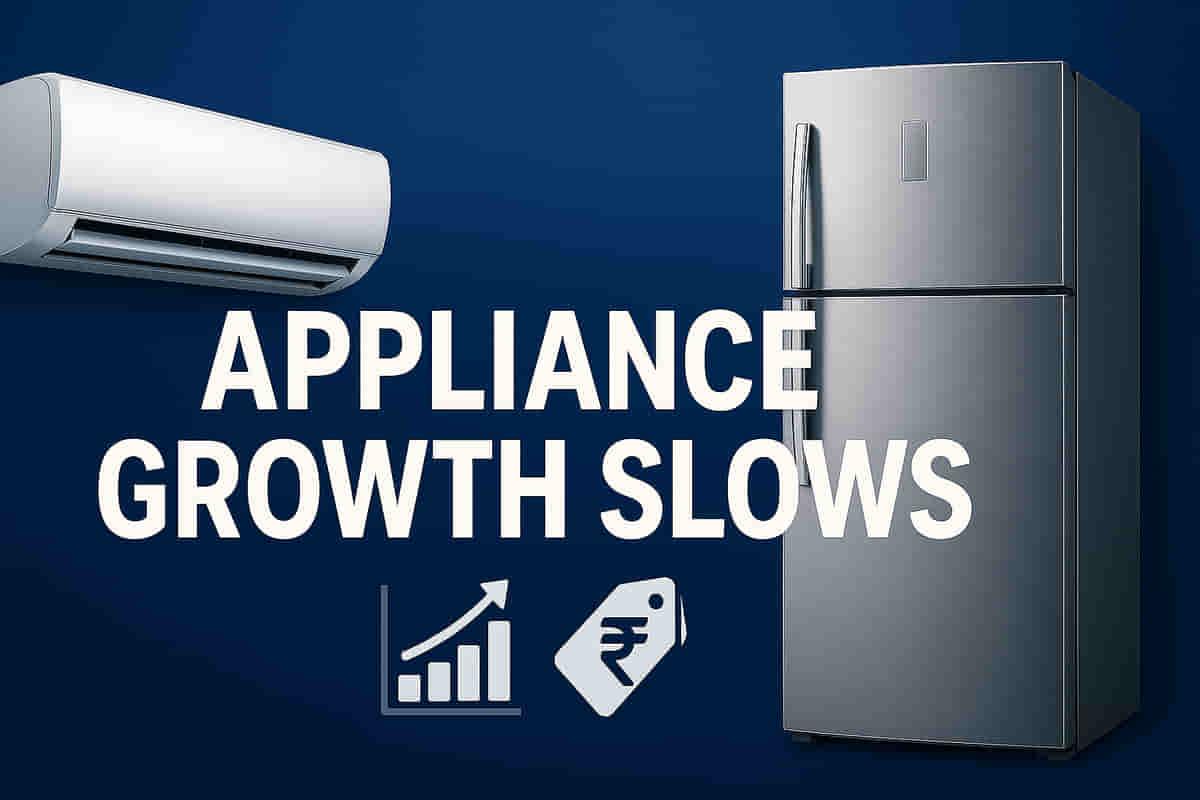India's Large Appliance Makers Face Revenue Slowdown, Margin Squeeze Despite GST Cut Boost
Consumer Products
|
30th October 2025, 10:07 AM

▶
Short Description :
Detailed Coverage :
Revenue growth for India's large appliance manufacturers is forecast to significantly moderate to 5-6% in fiscal year 2026, a sharp decrease from the 16% growth seen in the previous year. This slowdown is attributed to weaker demand for cooling products during the early monsoon season and the effect of a high base from the prior year's performance.
A recent reduction in Goods and Services Tax (GST) by 10 percentage points on air conditioners and large-screen televisions is anticipated to provide a temporary boost. This cut is expected to translate into savings of ₹3,000 to ₹6,000 per unit for consumers, potentially encouraging upgrades to premium models and driving an 11-13% growth in the second half of FY26.
Despite revenue forecasts, operating margins are projected to contract by 20-40 basis points, settling around 7.1-7.2%. This squeeze is driven by increasing costs of key raw materials like steel, aluminium, and copper, coupled with intense price competition in the market.
Manufacturers are proceeding with higher capital expenditure, with a notable 60% jump estimated to ₹2,400 crore this fiscal. This surge is particularly concentrated in the air conditioner segment, which is expected to account for nearly half of the total capex. This investment is partly motivated by the upcoming Bureau of Indian Standards (BIS) norms for imported compressors, effective from April 2026.
While cooling products face headwinds, refrigerators are expected to see low double-digit growth in the latter half of the fiscal year, driven by demand for larger models. Washing machines are poised to maintain their growth trajectory of 7-8%, supported by increased demand for dryers due to the early monsoon.
The credit profiles of companies in the sector are reported to remain robust. They benefit from low debt reliance, with interest coverage ratios exceeding 20 times and a net cash accrual-to-debt ratio of around 2.5-2.6 times.
Analysts like Prateek Kasera of Crisil Ratings express optimism about the long-term prospects, citing India's low penetration levels across major appliance categories as a key growth driver.
Impact This news directly impacts the Indian consumer durables sector, affecting manufacturers, suppliers of raw materials, and consumer spending patterns. It provides insights into the operational challenges and strategic investments within a key segment of the Indian economy. Rating: 7/10
Difficult Terms FY26: Fiscal Year 2026, which runs from April 1, 2025, to March 31, 2026. Monsoon: The season of heavy rainfall in tropical regions, particularly in India. High Base Effect: When a period's performance is compared to a period with unusually high or low results, which can distort the perceived growth rate. GST: Goods and Services Tax, a consumption tax imposed on most goods and services in India. Operating Margins: A measure of a company's profitability from its core business operations, calculated as operating income divided by revenue. Basis Points: A unit of measure used in finance to denote the percentage change in a financial instrument. One basis point is equal to 0.01% (1/100th of a percentage point). Raw Material Costs: The expenses incurred by a company for the basic materials it uses to produce its goods. BIS Norms: Bureau of Indian Standards norms, which are quality and safety standards set by the Indian regulatory body. Compressors: The part of an air conditioner or refrigerator that compresses and circulates refrigerant. Capex: Capital Expenditure, money spent by a company to acquire, upgrade, and maintain physical assets like property, buildings, and equipment. Penetration Levels: The extent to which a product or service is used by a particular population or market.